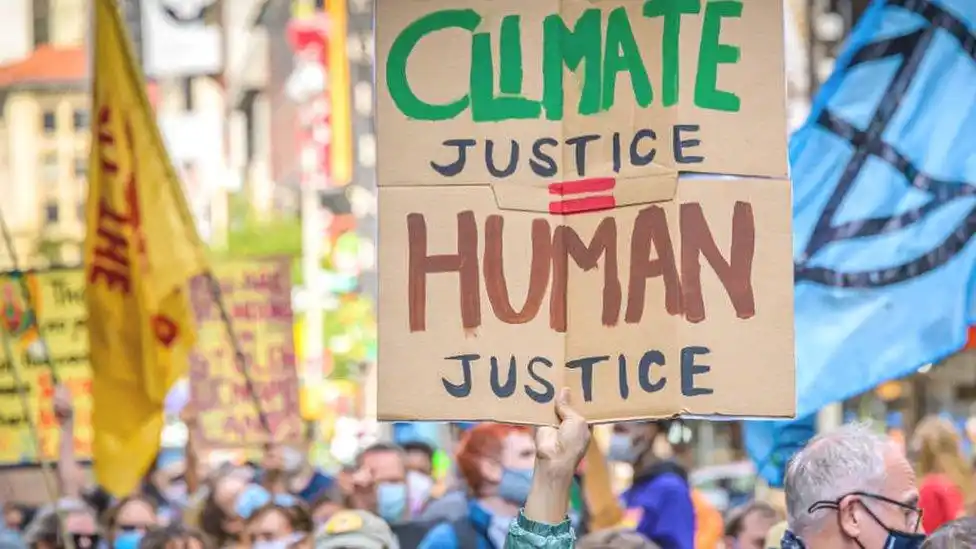How Climate Change and Social Justice Intersect: What We Can Do to Make a Difference

The conversation surrounding climate change often focuses on environmental impacts—rising temperatures, extreme weather events, and melting ice caps. However, it is crucial to recognize that climate change is not just an environmental issue; it is a social justice issue as well. The impacts of climate change are not felt equally across societies, and those who have historically contributed the least to global emissions are often the ones bearing the brunt of its effects.
This is where the concept of climate justice comes into play—an approach that connects environmental issues with human rights, equity, and social fairness. Climate justice seeks to ensure that climate action addresses the inequities in both responsibility and vulnerability.
As we mark this year’s United Nations World Day of Social Justice, with the theme “Empowering Inclusion: Bridging Gaps for Social Justice,” it’s crucial to explore how climate change exacerbates social inequities and what each of us can do to mitigate its impacts. While large-scale structural changes are necessary, individuals around the world also play an essential role in the collective effort to combat climate change and promote social justice.
1. Vulnerable Communities Face Disproportionate Impacts from Climate Change
Climate change exacerbates the hardships of the world’s most vulnerable populations. These communities, many of whom live in regions prone to extreme weather events, face devastating consequences as climate change leads to floods, droughts, and unpredictable weather patterns. While the global poor have contributed the least to the climate crisis, they are often left to face the worst of it, with limited resources to adapt. The Intergovernmental Panel on Climate Change (IPCC) estimates that climate change could push an additional 100 million people into extreme poverty by 2030, particularly in the Global South.
But individuals worldwide can help prevent further harm. Every effort to reduce our carbon footprint, from choosing sustainable transportation to conserving energy at home, can reduce the overall environmental burden. By taking small steps to lower emissions and reduce waste, we each play a part in limiting the scale of climate disasters that affect the most vulnerable.
2. Climate Change Hinders Economic Mobility
For many, climate change represents an insurmountable obstacle to escaping poverty. In regions where basic services like water, food, and healthcare are already scarce, the additional stress caused by climate disasters can push families further into poverty. As these communities struggle to recover, the ability to invest in future opportunities—such as education or healthcare—is hindered, perpetuating cycles of inequality.
To help combat this, individuals in wealthier nations can advocate for fair climate policies, push for climate-conscious investments, and support global efforts to provide financial resources to the communities most in need. By making conscious choices as consumers and supporting businesses with strong environmental practices, everyone has a role in promoting economic justice through climate action.
3. Climate Change as a Human Rights Issue
The impacts of climate change also present serious human rights challenges. As global temperatures rise, essential rights such as the right to clean water, food security, and safe housing are increasingly threatened. Extreme weather events such as storms, floods, and wildfires often lead to displacement, disrupt access to clean water and food, and can even destroy entire communities.
For example, small island nations and coastal areas are particularly vulnerable to rising sea levels, which threaten to displace entire populations. The United Nations reports that climate change could displace as many as 200 million people by 2050, creating a new class of climate refugees. Addressing the root causes of climate change is critical to protecting the human rights of these vulnerable populations.
4. Building a Just Transition for All
A just transition to a low-carbon economy is essential for ensuring that no one is left behind in the shift away from fossil fuels. As industries and economies transition to greener, more sustainable models, it is critical to provide support to workers who may be displaced by these changes. This includes investing in green jobs, renewable energy technologies, and sustainable practices that create new opportunities.
Equally important is the involvement of Indigenous peoples and local communities in decision-making processes. Their traditional knowledge and expertise in land stewardship are invaluable assets in creating solutions that are both environmentally and socially sustainable. Ensuring that all voices are heard in the transition is key to building an inclusive and equitable future.
Conclusion: A Path Toward Climate Justice
The intersection of climate change and social justice calls for a holistic approach to climate action—one that takes into account both environmental sustainability and the equitable distribution of resources. The most vulnerable communities, who contribute least to climate change, must be prioritized in efforts to mitigate its effects and adapt to its impacts.
By ensuring that climate solutions are fair, inclusive, and respectful of human rights, we can work toward a future where both people and the planet can thrive. Climate justice is not just about addressing environmental issues—it is about creating a just, sustainable, and equitable world for all.
How can we shift our actions to make climate justice central to the fight for equality?
